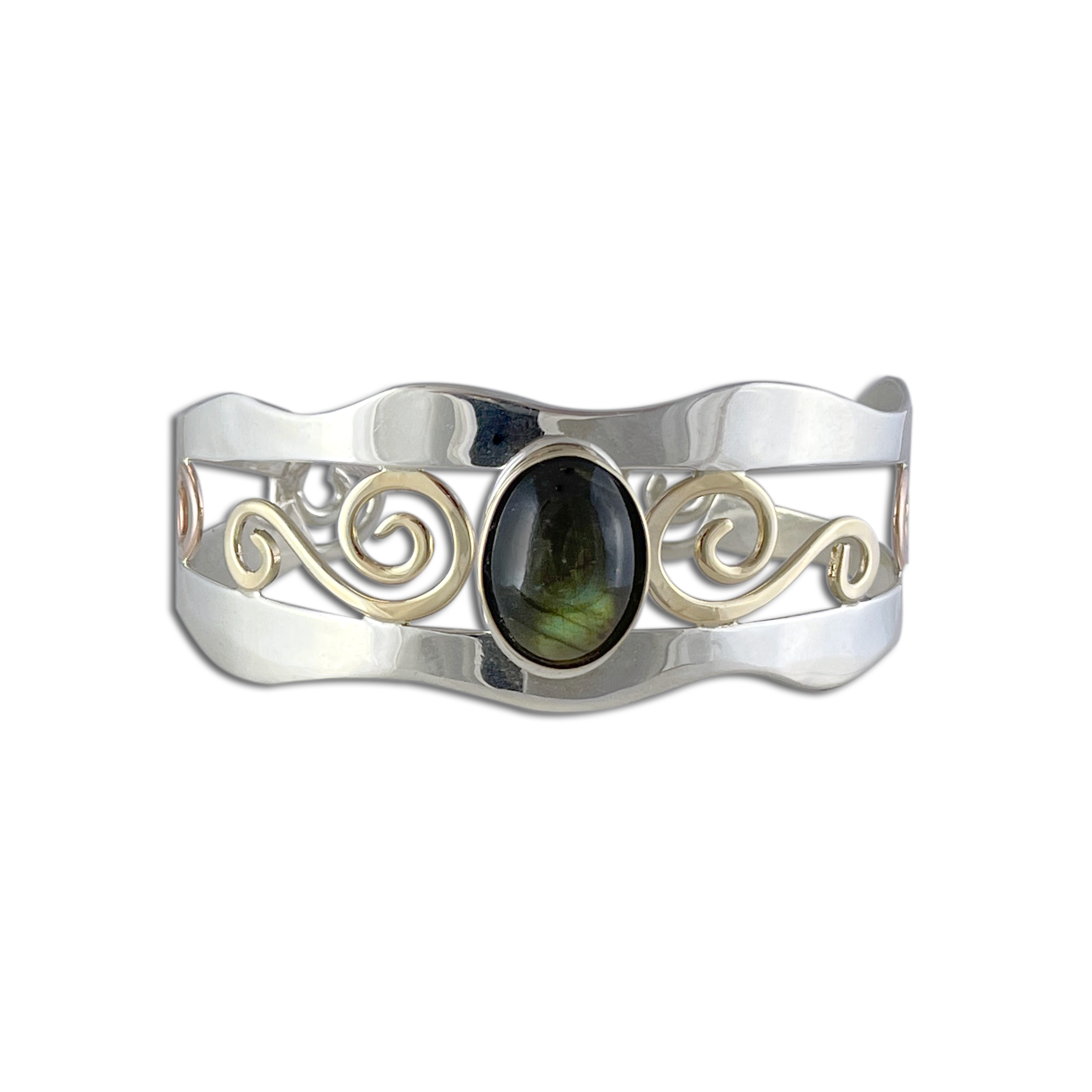 Image 1 of 1
Image 1 of 1


Labradorite Swirling Bracelet in Sterling + 14k
1¨H
SS/14K (yellow + rose)
Cuff bracelets should sit comfortably on your wrist without any turning or need for clamping. Do NOT open and close the bracelet. Rolling the bracelet on and off using the soft underside of your wrist 1" above the wrist bone will keep it from stressing or damaging it. If the bracelet is too small or too large, we can custom make one to fit you properly.
Labradorite
Labradorite is a member of the Feldspar family and is treasured for its remarkable play of color, known as labradorescence. The stone, usually gray-green, dark gray, black, or grayish-white, is composed of aggregate layers that refract light as iridescent flashes of peacock blue, gold, pale green, or coppery red. The predominant blue varies within the light, displaying hues from deepest blue to various shades of pale, almost blue-green.
This crystal was first discovered in Labrador, Canada, by Moravian missionaries in 1770 who named it for the area. It is, however, referenced in legends by older Inuit tribes, and was known to be in use by the Red Paint People of Maine for over a thousand years. It became a popular gem in Europe in the eighteenth and nineteenth centuries.
1¨H
SS/14K (yellow + rose)
Cuff bracelets should sit comfortably on your wrist without any turning or need for clamping. Do NOT open and close the bracelet. Rolling the bracelet on and off using the soft underside of your wrist 1" above the wrist bone will keep it from stressing or damaging it. If the bracelet is too small or too large, we can custom make one to fit you properly.
Labradorite
Labradorite is a member of the Feldspar family and is treasured for its remarkable play of color, known as labradorescence. The stone, usually gray-green, dark gray, black, or grayish-white, is composed of aggregate layers that refract light as iridescent flashes of peacock blue, gold, pale green, or coppery red. The predominant blue varies within the light, displaying hues from deepest blue to various shades of pale, almost blue-green.
This crystal was first discovered in Labrador, Canada, by Moravian missionaries in 1770 who named it for the area. It is, however, referenced in legends by older Inuit tribes, and was known to be in use by the Red Paint People of Maine for over a thousand years. It became a popular gem in Europe in the eighteenth and nineteenth centuries.
